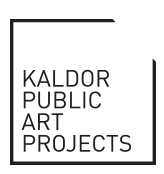Art : Creative Practice Unit 3
Assessment:
-
Units 3 and 4 School-assessed Coursework: 10 per cent
-
Units 3 and 4 School-assessed Task: 60 per cent
-
End-of-year examination: 30 per cent.
Outcome 2: Personal investigation using the Creative Practice
In this area of study you will continue to develop a Body of Work through Inquiry learning.
You will use the Creative Practice to develop your own visual responses inspired by ideas and experiences. The starting points for the Body of Work in Area of Study 2 may vary as you can continue to explore the ideas and issues from Area of Study 1, be influenced by the practices of other artists, or explore other ideas of personal interest.
You will continue to use the Creative Practice as you progressively explore and develop their ideas, and investigate and experiment with materials, techniques and processes using art forms of your choice. You will also be developing your personal visual language.
You will document, critically analyse and evaluate your responses and art making throughout the Creative Practice, using art terminology. You will select and apply the appropriate Interpretive Lenses to annotate your art making throughout the Creative Practice.
Key knowledge
• the use of selected materials, techniques, processes and art forms throughout the Creative Practice
• the use of the Creative Practice to explore and experiment with ideas, materials, techniques and processes
• characteristics of visual language that communicates personal ideas
• the use of the Creative Practice to develop ideas, materials, techniques and processes
• the selection of the appropriate Interpretive Lenses throughout the Creative Practice
• methods used to document the use of the Creative Practice
• the use of art terminology in analysis, reflection and evaluation
Key skills
• use selected materials, techniques, processes and art forms throughout the Creative Practice
• apply, document and critically reflect on the use of the Creative Practice to develop personal responses
• explore and develop visual language that communicates personal ideas
• manipulate and apply materials, techniques and processes in selected art forms to develop personal responses
• select and apply the appropriate Interpretive Lenses throughout the Creative Practice
• document and annotate, using visual material and written material, to critically reflect on and evaluate the use of the Creative Practice
• apply art terminology in analysis and critically reflective and evaluative annotations
EXAMPLE 1:
Body of Work – building on the artist from Outcome 1
Artist inspiration: Rosalie Gascoigne (HIST) (Australian, 1917–1999)
Research and exploration
Found objects; signs; everyday imagery; collage; assemblage; square format; all-over composition; two-colour palette; text; pattern; repetition.
Experimentation and development
Collect packaging from your daily life. This could be fast-food wrappers, grocery packaging, brand tags from clothing etc.
Experiment with compositions that use repetition and assemblage to create compositions.
Scan or photograph these and print them out on a large scale.
Document these in visual and written form.
Reflection and evaluation
In visual and written form, consider how your visual responses relate to the original idea. Use the Interpretive Lenses to inform your reflections. How do your responses build on your findings for Outcome 1? How could you extend your ideas further? What
ideas are you communicating with the responses? Could you deepen these? Could you take collages into assemblage format? What objects would you use? Make thumbnail sketches and notes.
Experimentation and development
From your reflections, expand your ideas, continuing to experiment with materials, techniques and processes. Continue to reflect and evaluate, recording this in visual and written form.
Example 2:
Body of Work – starting from a new personal concept
Inspiration: Shadows and Reflections: How Light Behaves
Research and exploration
Investigate artists such as Tim Noble and Sue Webster, Edward Weston, James Turrell, Cassils.
Explore ideas such as projected light, silhouettes; light and water; shadows on texture; performance; installations.
Experimentation and development
-
Collect recyclables and play with forming these into structures. Cast a strong light across the structures and observe how the shadows behave.
-
Using a model, cast a strong light across the body and observe how the shadows distort the human form.
-
Use ordinary objects from the kitchen to set up simple still life compositions. Photograph these, changing the light source to see how this affects the mood of the image.
-
Observe the way light and dark exist in architectural spaces. Make sketches or painting studies that focus on capturing the contrast in these scenes.
-
Document these in visual and written form.
Reflection and evaluation
In visual and written form, consider how your visual responses relate to the original idea. Use the Interpretive Lenses to inform your reflections. How could you extend your ideas further? Could you build installations that immerse the audience in dark and light? Could you build a series of photographs of still objects that collectively create a sense of tension or drama because of the lighting? Make thumbnail sketches, trials and notes.
Experimentation and development
From your reflections, expand your ideas, continuing to experiment with materials, techniques and processes. Continue to reflect and evaluate, recording this in visual and written form.
FOLIO: EMMA TRIPP – ART CREATIVE PRACTICE, 2023
(Source: Top Arts 2023 https://www.ngv.vic.gov.au/toparts-folio/top-arts-2023-emma-tripp/#exhi-tab-toparts-folios
https://docs.google.com/presentation/d/16wuPmuuYIUFb3djaOVaZTkSkMf-a4tTZkyYe4Sorj8I/edit?usp=sharing










